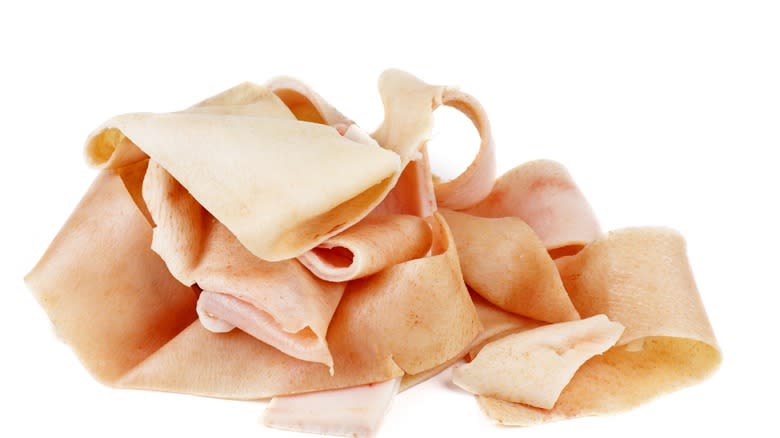How Pork Rinds Really Get Their Crispy, Puffy Texture

Ah, the unique delight of biting into a pork rind! It's a combination of a light, puffy texture and a satisfying crunch that makes it a popular snack around the world. However, if you've ever wondered how these crispy treats get their distinctive texture, there's fascinating science behind it. Pork rinds, known as chicharrones in many Spanish-speaking countries, are made from pig skin. However, if you were to fry a fresh piece of pig skin, it wouldn't result in the airy and crisp snack we're familiar with. So, what's the secret? It's not just about the frying process. Primarily, it comes down to removing moisture and fat.
The magic happens when the small amount of residual moisture trapped within the skin turns to steam in the intense heat of frying. This steam wants to escape, and as it pushes outward, it puffs up the skin, transforming the skin's flat, somewhat rubbery texture into a light, airy delight. This crisping is made possible by the high temperatures of the deep frying oil and also because the fat on the pork skin has been completely rendered before frying, hence avoiding a dense, chewy texture.
Read more: Styles Of Regional BBQ In The US
How To Prepare Pork Skin To Guarantee A Crispy, Puffy Snack

Making pork rinds isn't as simple as tossing them into a fryer. The preparation of the skin plays an integral role. To start, the fat on fresh pork skin is completely removed. This can be done by scoring the skin and chopping off the fat or boiling the skin, then scraping off any residual fats after cooling. This step is vital because too much fat will inhibit the puffing process.
Next, the skins are dehydrated. This can take several hours or days, depending on whether they are processed in a dehydrator, baked in an oven, or dried in the sun. The goal is to ensure the skins retain as little moisture as possible, which will react rapidly during frying. When it's time to fry, the dried skins are immersed in hot oil. As mentioned earlier, the intense heat causes the residual moisture in the skin to turn into steam, inflating the skin and causing it to puff up. Then the pork rinds are drained of excess oil, seasoned, and left to cool.
The irresistible crunch and puffiness of pork rinds are not just happy accidents. They result from a meticulous process. So, the next time you enjoy these savory treats, take a moment to appreciate the process that goes into making them so delightfully crunchy.
Read the original article on Tasting Table.